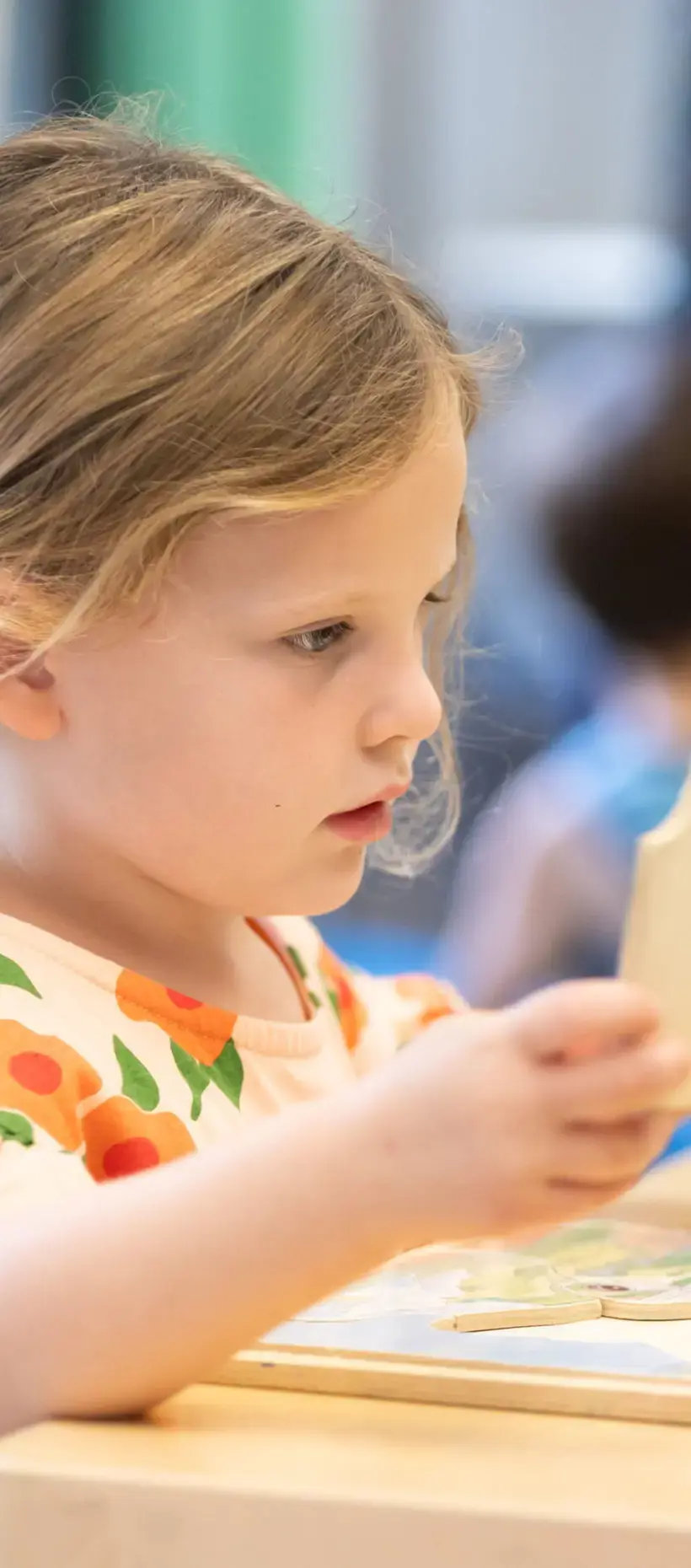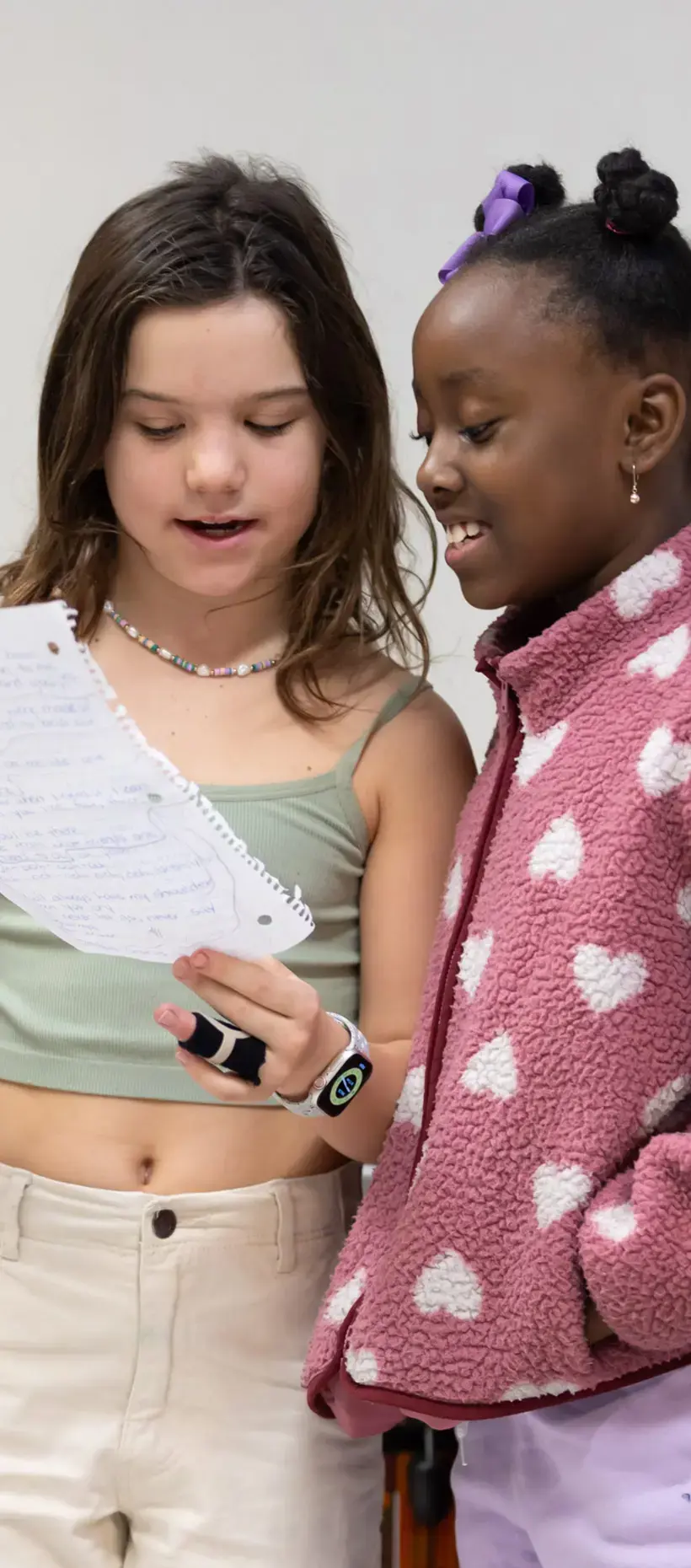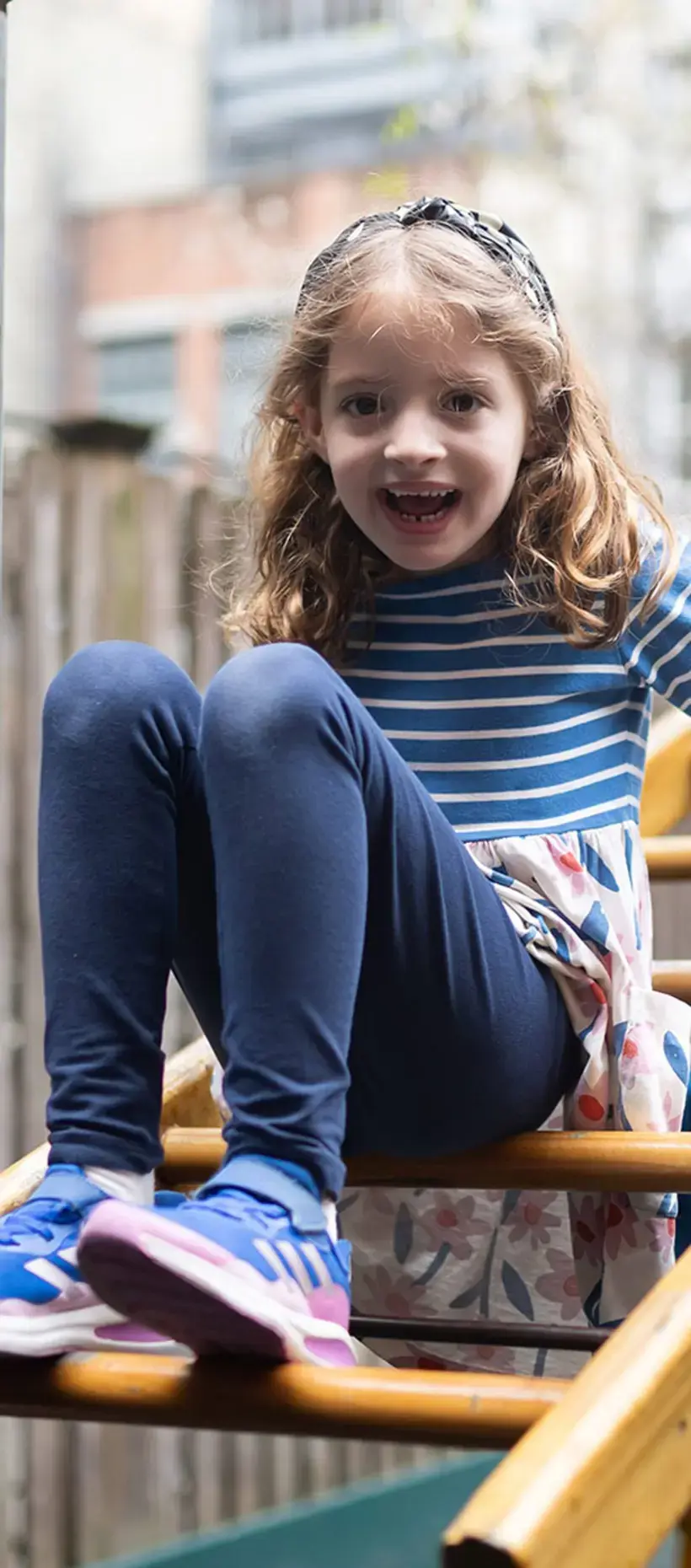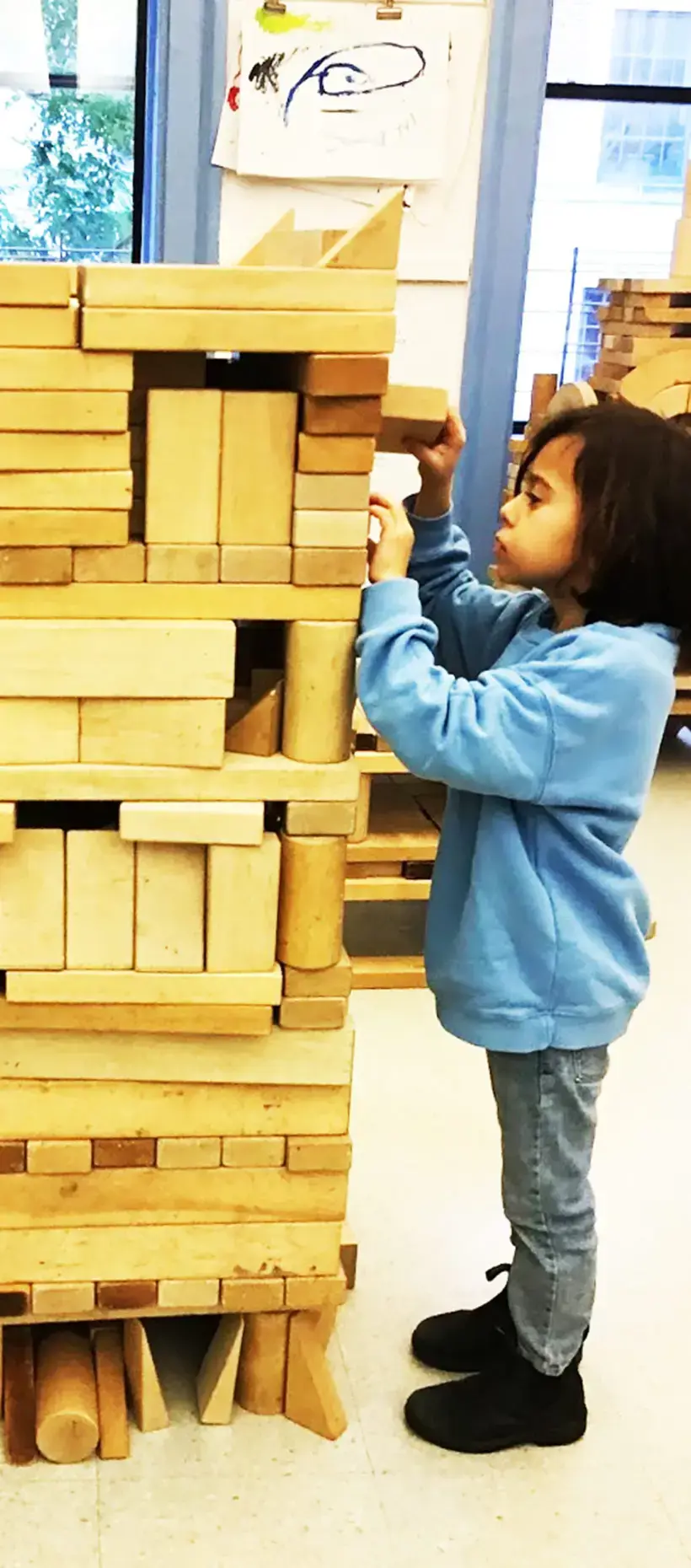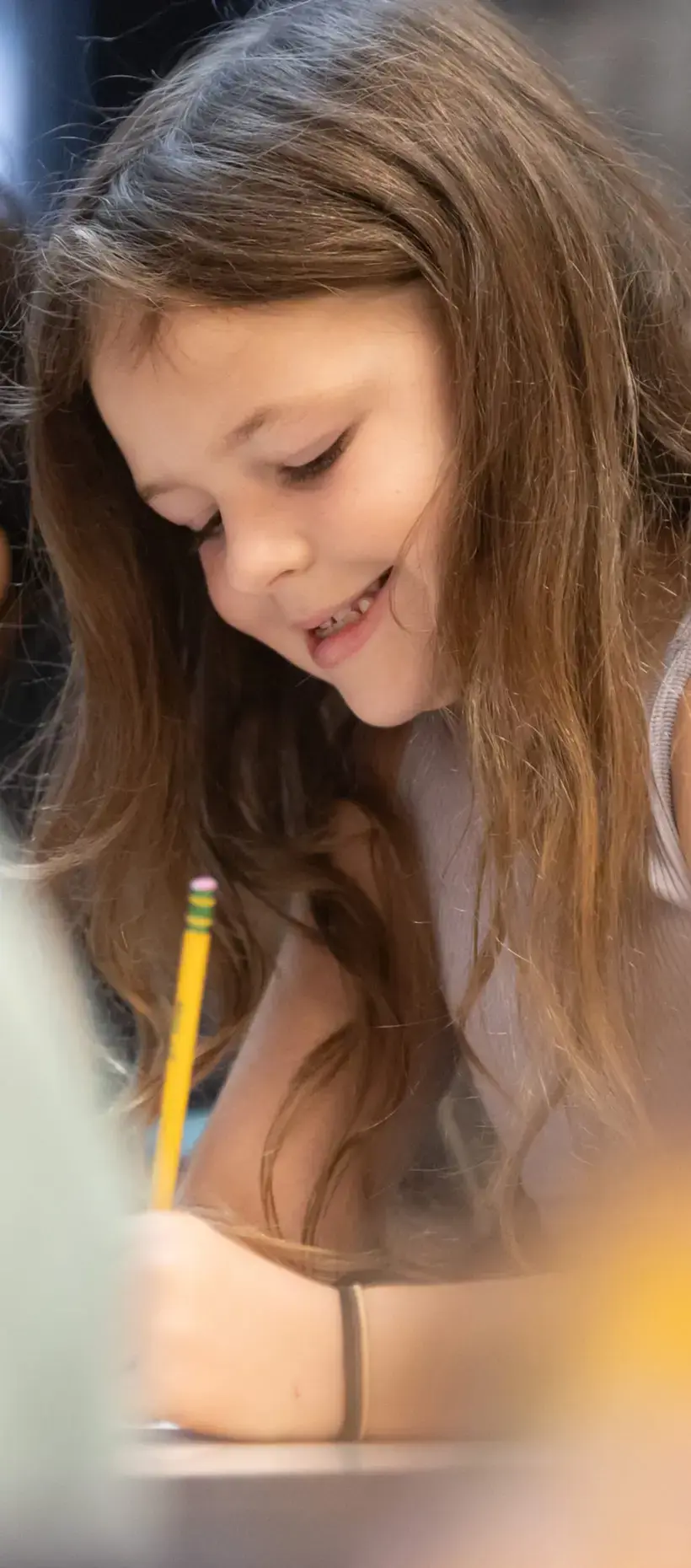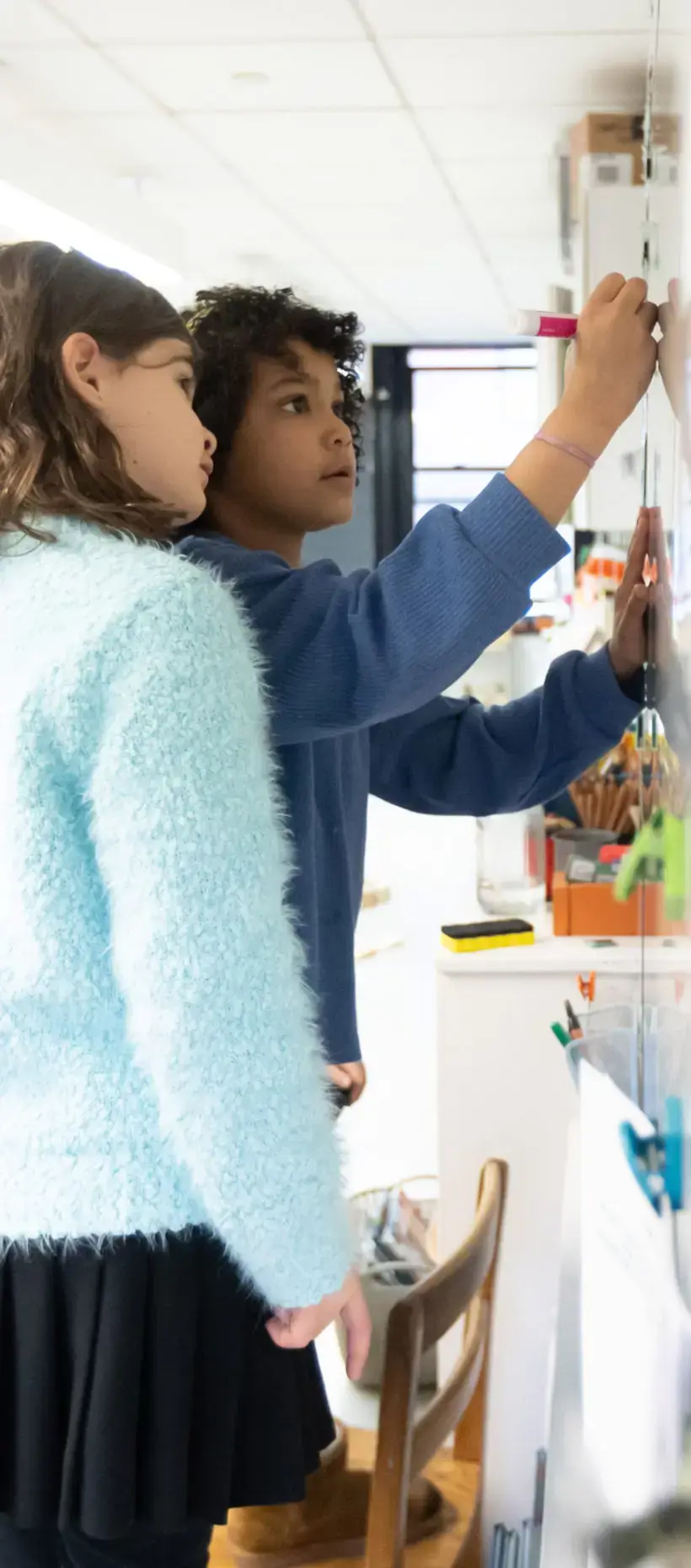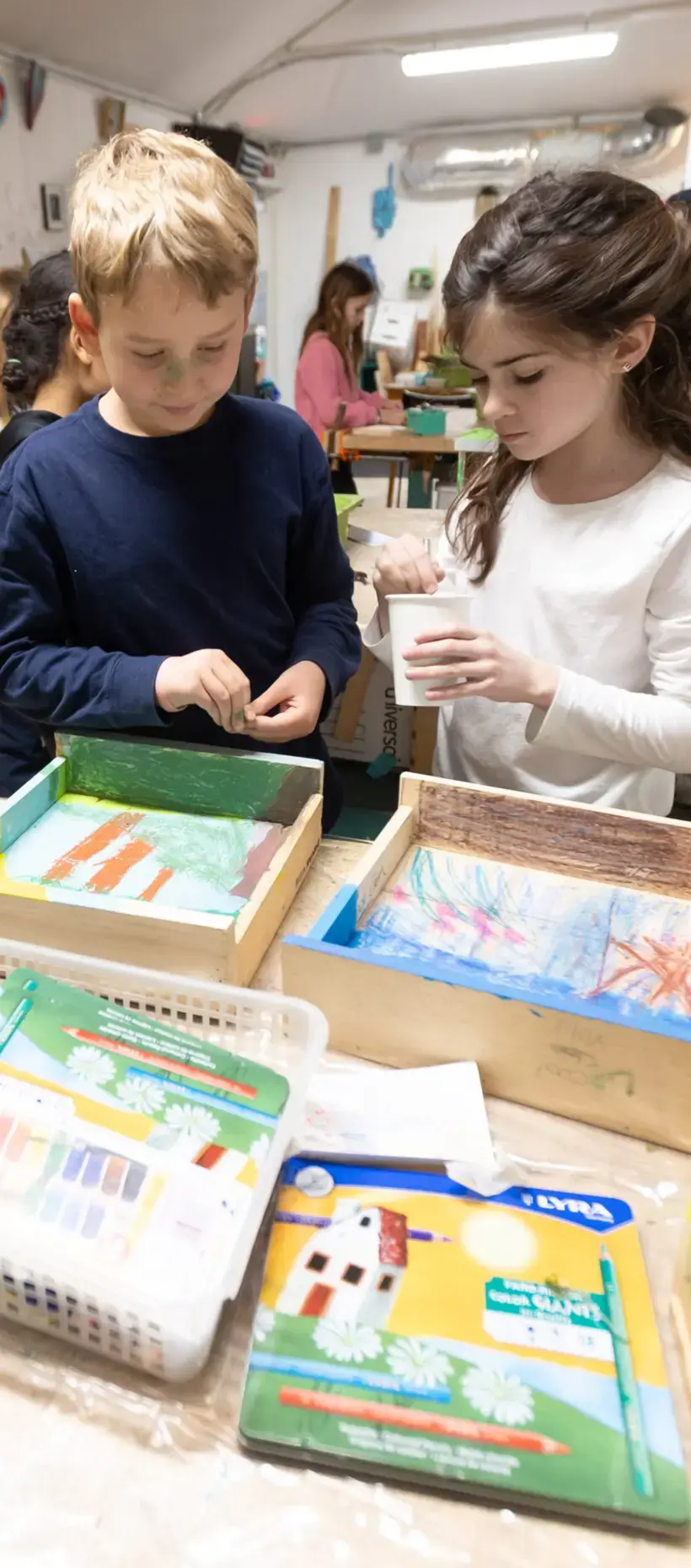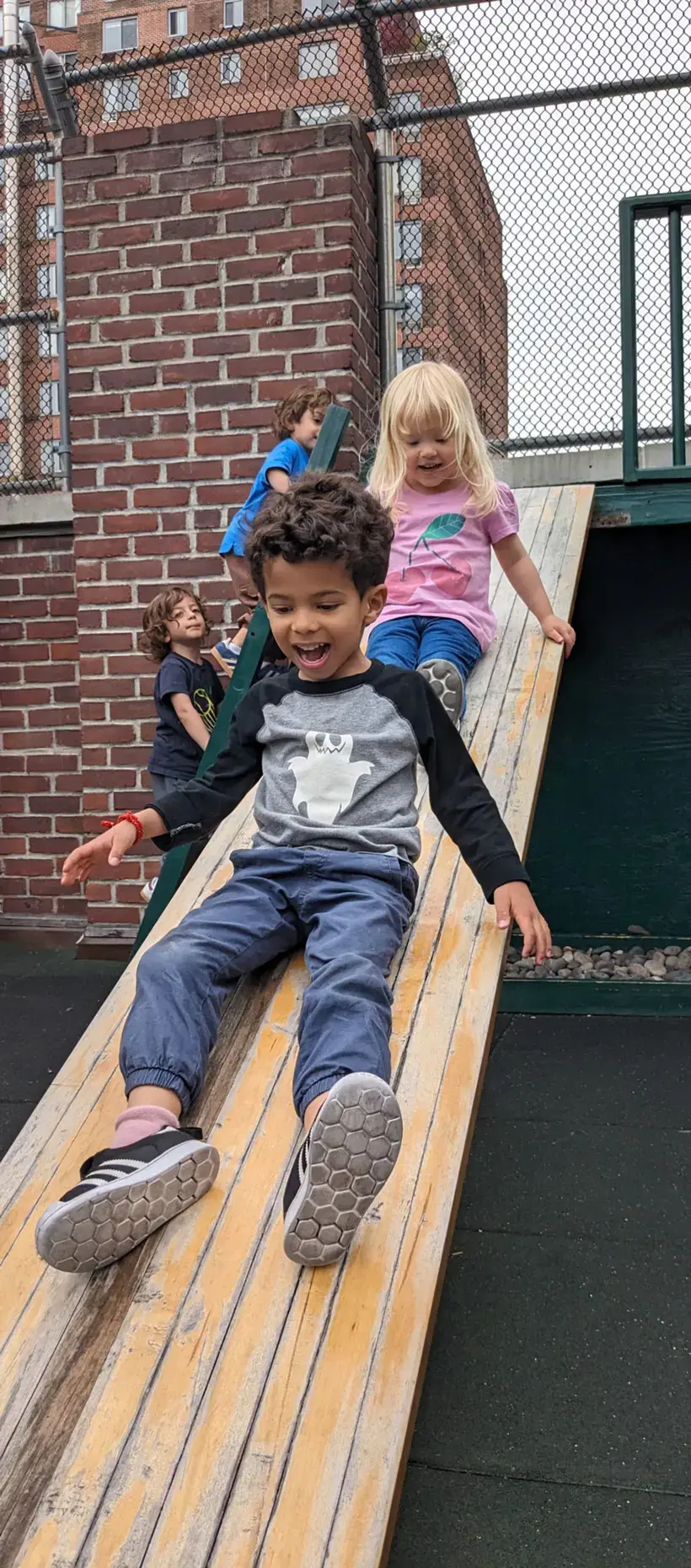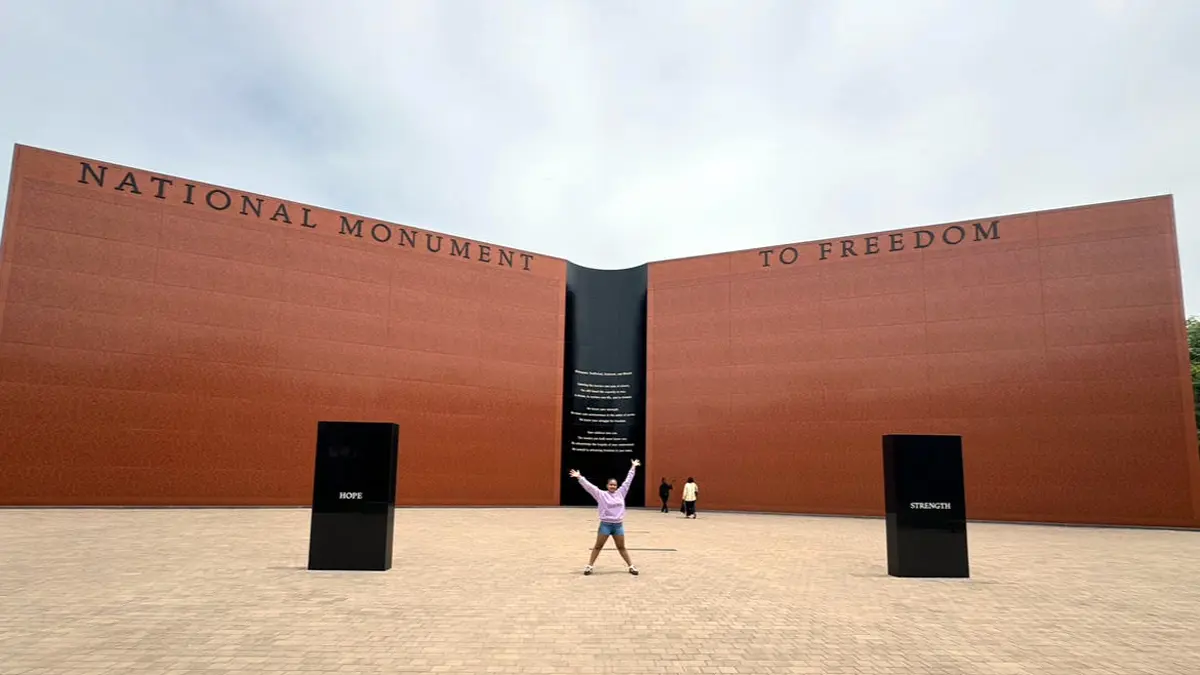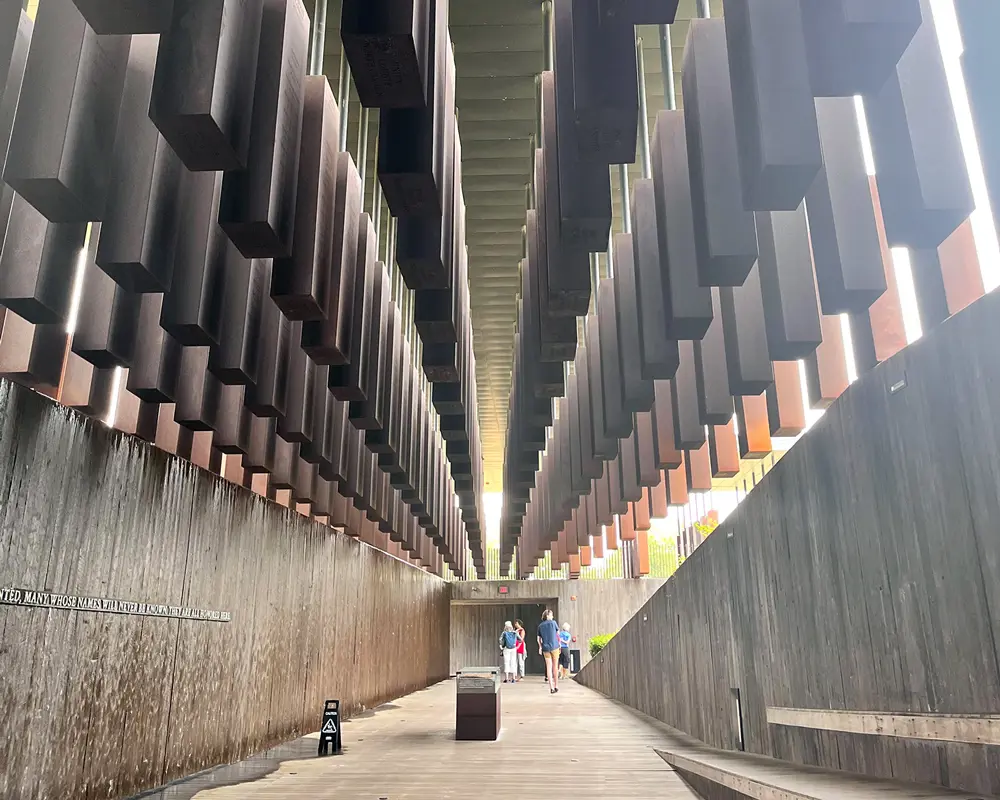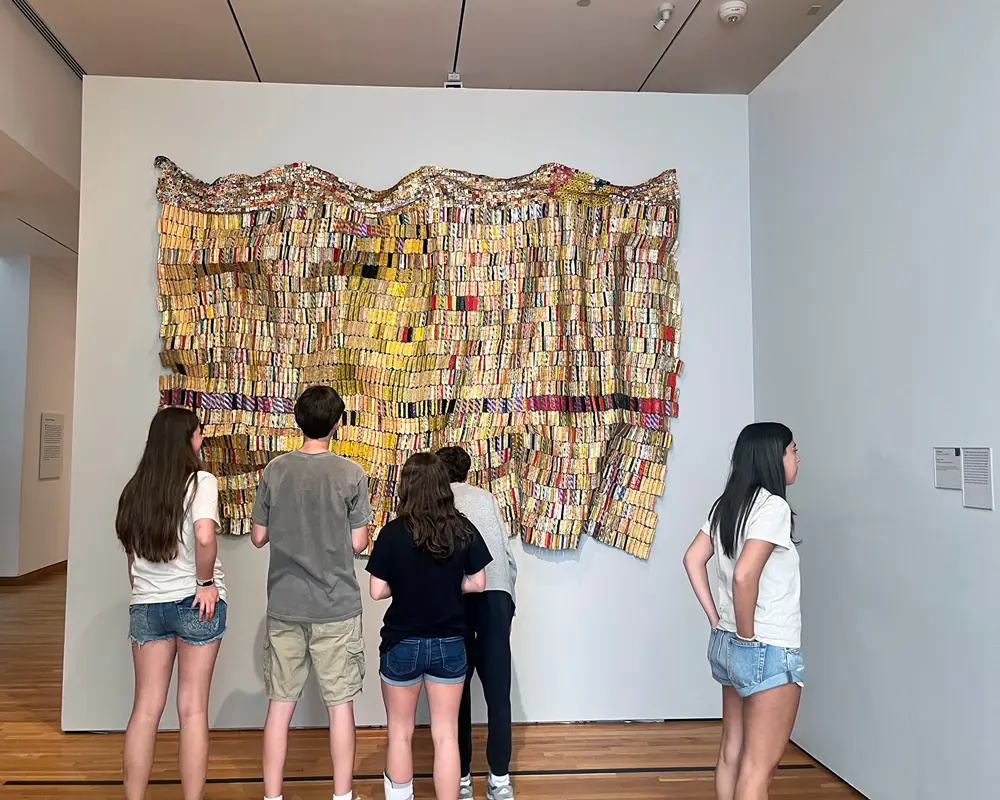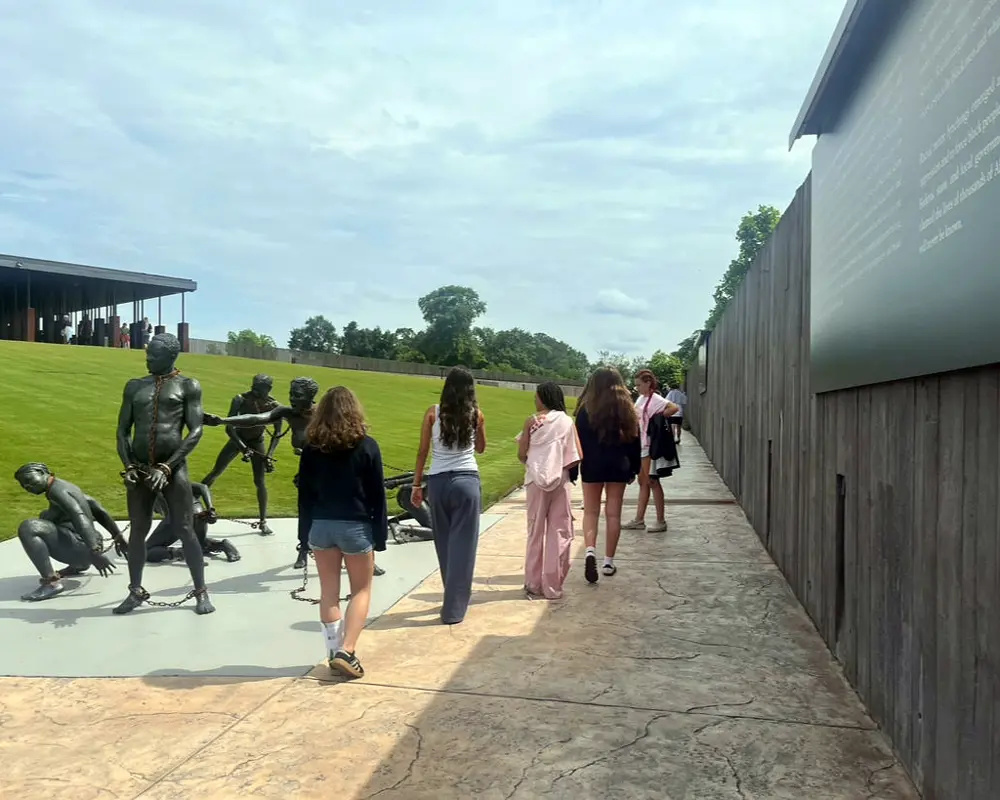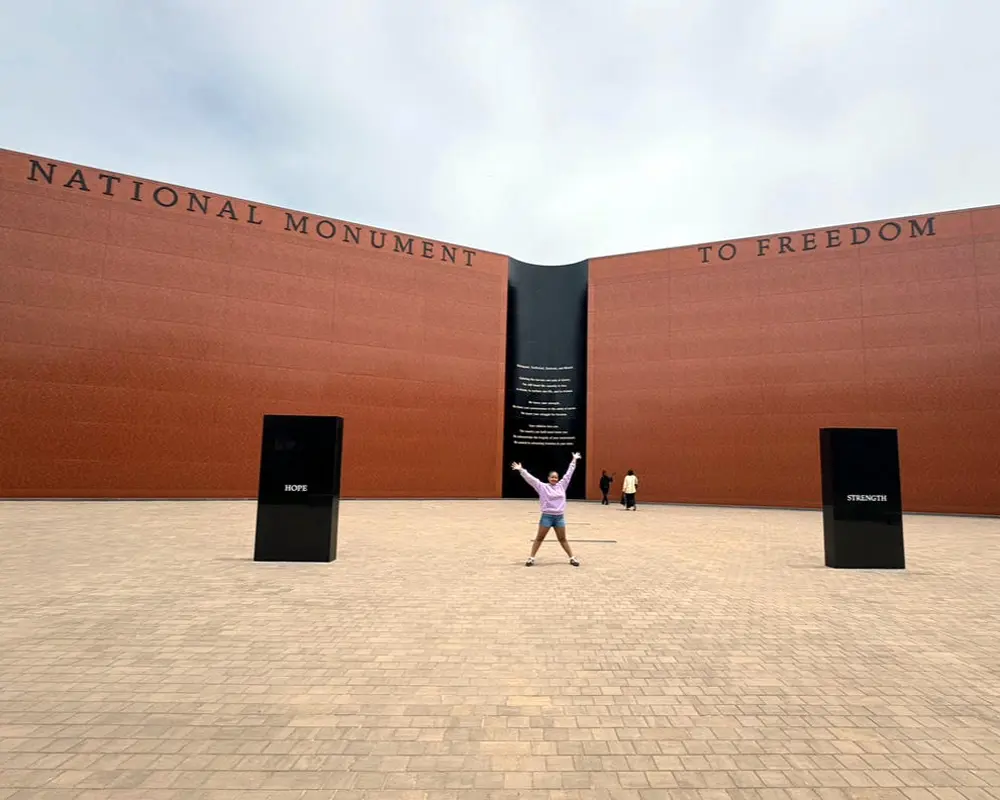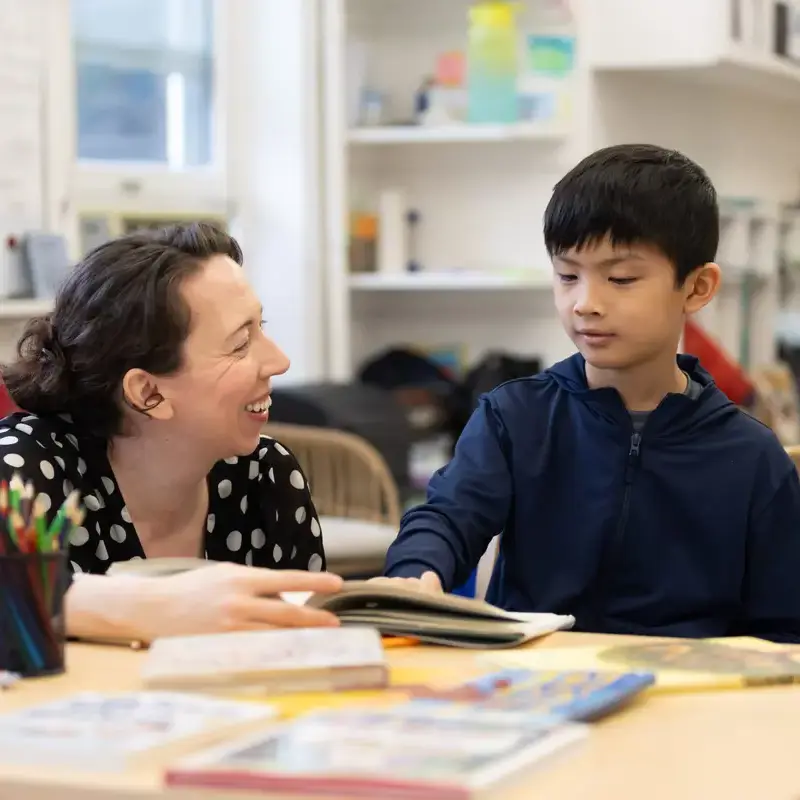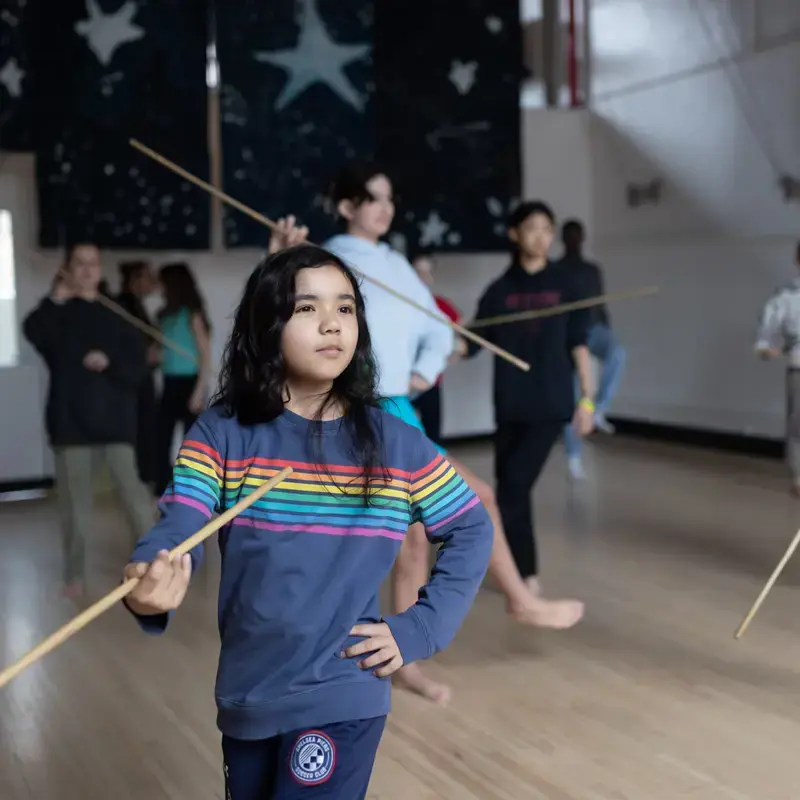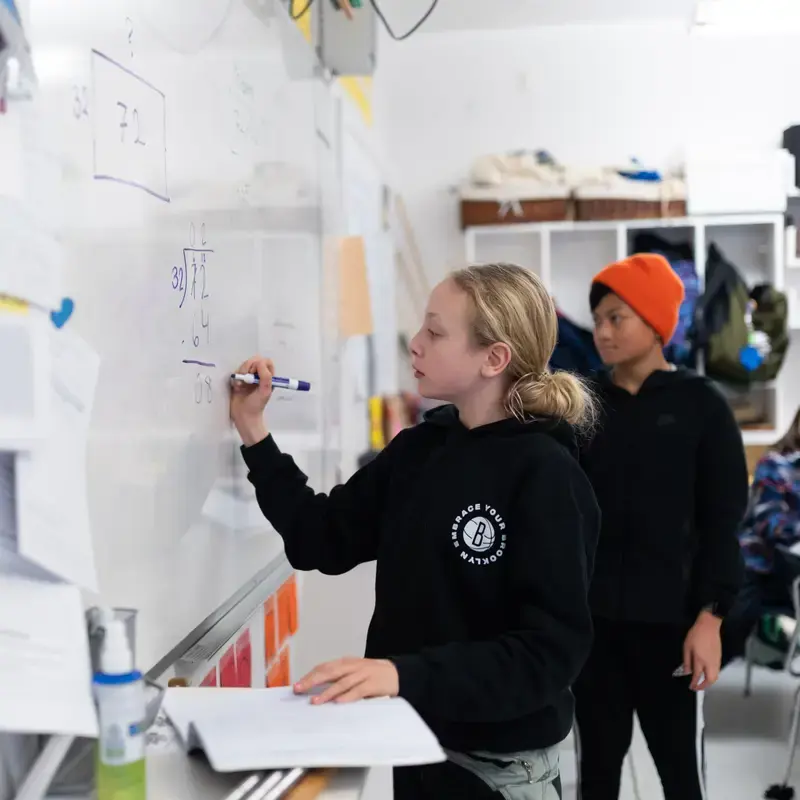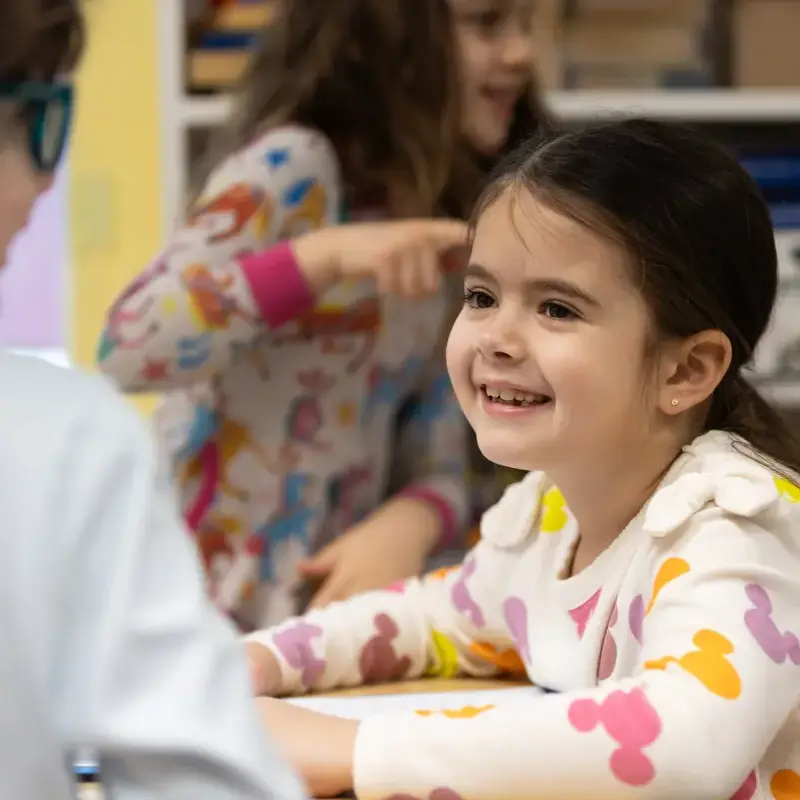The XIIIs' Profound Trip to the South
|
by Alaia and Sylvan, XIIIs. Originally published in the XIIIs' school newspaper, Whole Lotta News. Photos taken by Sylvan. Placed online with permission. Student last names removed for privacy. The XIIIs recently returned from their trip down south. The experience had a profound effect on many students, who were deeply moved by what they learned.“It was a really powerful experience to get to see…such historical places, and…aside from academics, it was just a really fun time with friends,” said Imani, XIIIs. The XIIIs’ first stop was in Atlanta, where they visited the Atlanta History Center. The students had the privilege of being guided around the museum by Dr. La’Neice Littleton, the Director of Community Collaborations there. Dr. Littleton taught the students about Atlanta’s history, specifically focusing on the 1881 Washerwomen Strike and a display of hats previously owned by the women in Dr. Martin Luther King Jr.’s family. “It was very engaging…the way that Dr. Littleton presented the information was in a fun but serious way…the information was serious but she kept us engaged by moving around and telling us little facts that we wouldn’t have learned otherwise,” said Samyiah, XIIIs. The next day, the XIIIs went to the MLK National Historic Park. They also visited Ebenezer Baptist Church, where Martin Luther King served as an associate minister and co-pastor alongside his father. Then, the XIIIs toured Auburn Avenue with Dr. Littleton. Auburn Avenue, also known as “Sweet Auburn,” is important to Atlanta’s Black population and history, as it was home to the emerging Black middle class prior to the Civil Rights Movement and contained many Black-owned businesses and churches. It is also the birthplace of Martin Luther King, and the location of his childhood home. Later, students visited the High Museum of Art. Next, the XIIIs visited the Legacy Museum in Montgomery, where they learned about the history of slavery, the Civil Rights Movement, and the history of racial terror and oppression in America. This museum in particular was extremely moving for many students, bringing some to tears. “Some parts were definitely hard to see…but it was very impactful and important. I think that everyone should go to the Legacy Museum at least one time in their life,” said Chloé, XIIIs. They also visited the Freedom Monument Sculpture Park, which included a massive wall displaying the last names of thousands of enslaved people, and the Peace & Justice Memorial, a memorial for victims of lynching. “I think that the fact that…there were thousands of names on the wall…it just hit me how many people were enslaved,” said Chloé. “I think that it’s one thing to hear a number and another to actually visualize it,” said Willa, XIIIs. The next day, the XIIIs visited the National Voting Rights Museum, and were lucky enough to be given a guided tour at the Civil Rights Institute with Barry McNealy. Barry taught the students extensively about the history of segregation, the Civil Rights Movement, and racial terror in the US. He was incredibly inspiring, telling the students “When I look at you, I see the future.” On their final day in the South, students visited Kelly Ingram Park, the site of the Children’s March, and 16th Street Baptist Church, where four little girls were killed by a bombing done by the KKK. Overall, the trip was extremely powerful, and very moving for the XIIIs, and it is an experience that they will never forget.
|

